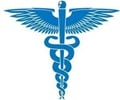A new framework to identify and deal with potential gaps in outpatient settings using electronic clinical surveillance tools has been developed to improve patient safety, a new study has found

The paper presents the overall framework of OSNP, which has been used to address a wide range of safety issues across diverse clinical conditions. The OSNP targets care gaps such as use of conflicting medications that could lead to drug interactions or the need for follow-up tests. This is in contrast to the majority of patient safety programs, which focus on emergency or inpatient care.
"More than 98 percent of interactions with patients occur in outpatient settings, and the Outpatient Safety Net Program leverages the power of electronic health records to target care gaps by scanning for things like medication interactions or needed follow-up tests," said study author Michael H. Kanter, MD, regional medical director of Quality and Clinical Analysis, Southern California Permanente Medical Group. "For instance, a patient who is on one or more medications that require annual monitoring who has not come in to get his or her blood drawn for the necessary test will be flagged by our electronic clinical surveillance tool, and we will remind the patient to come in and have his or her lab work done."
According to the researchers, this innovative approach can be applied by other health care organizations provided that they have key pieces of information in digital format, even if they do not have an electronic health record or integrated delivery systems.
"The Southern California Outpatient Safety Net program is different from other patient safety programs that are dedicated to inpatient or hospital care because it scans in the background for anything that was missed," said Dr. Kanter. "As other health care delivery systems develop and implement similar tools, information sharing of these methods across organizations may help contribute to improvements in outpatient safety more broadly."
Kaiser Permanente can conduct transformational health research such as this study in part because it has the largest private patient-centered electronic health system in the world. The organization's electronic health record system, Kaiser Permanente HealthConnect®, securely connects approximately 9.3 million patients to 16,000 physicians in almost 600 medical offices and 38 hospitals. It also connects Kaiser Permanente's research scientists to one of the most extensive collections of longitudinal medical data available, facilitating studies and important medical discoveries that shape the future of health and care delivery for patients and the medical community.
Advertisement
Advertisement







